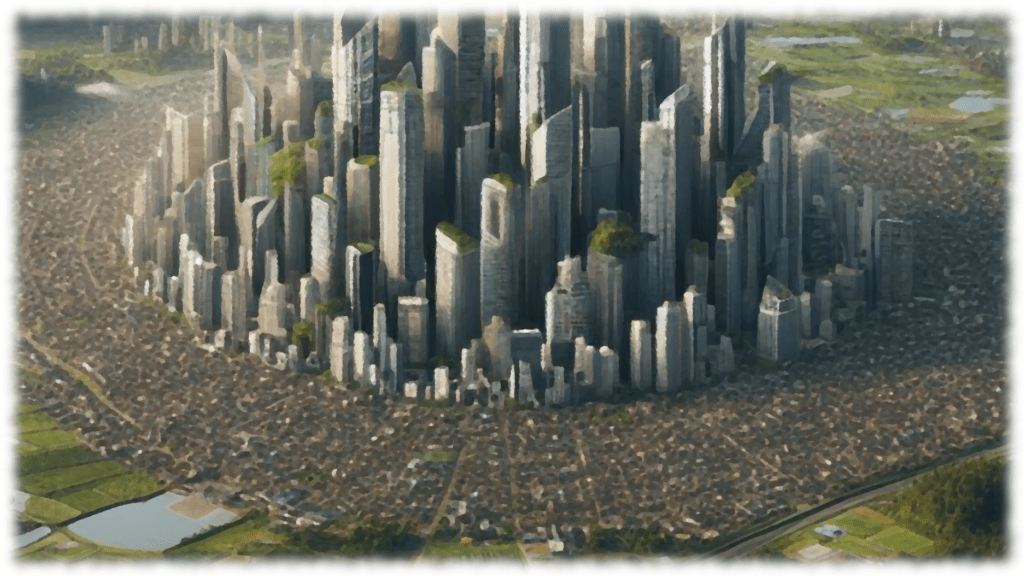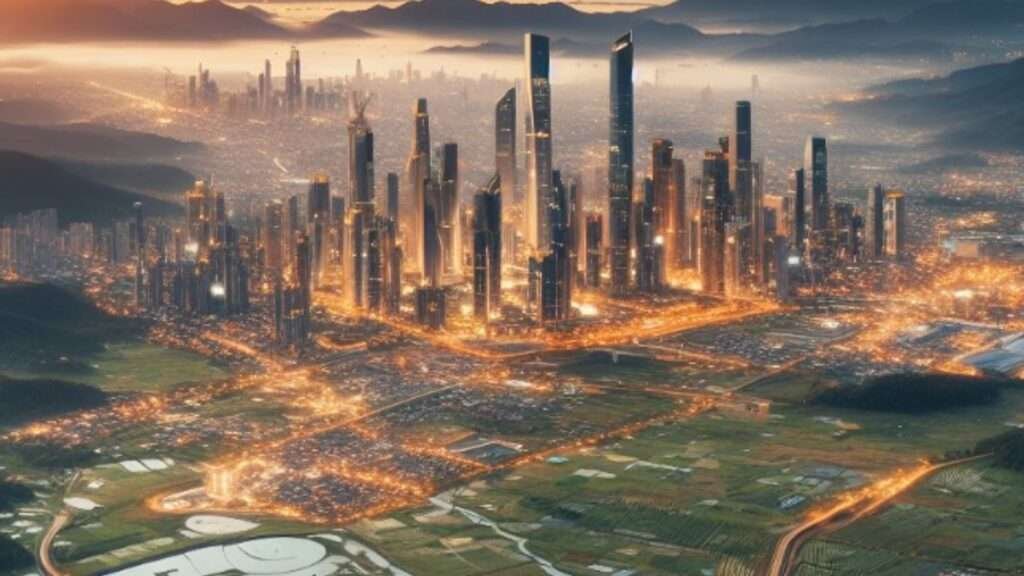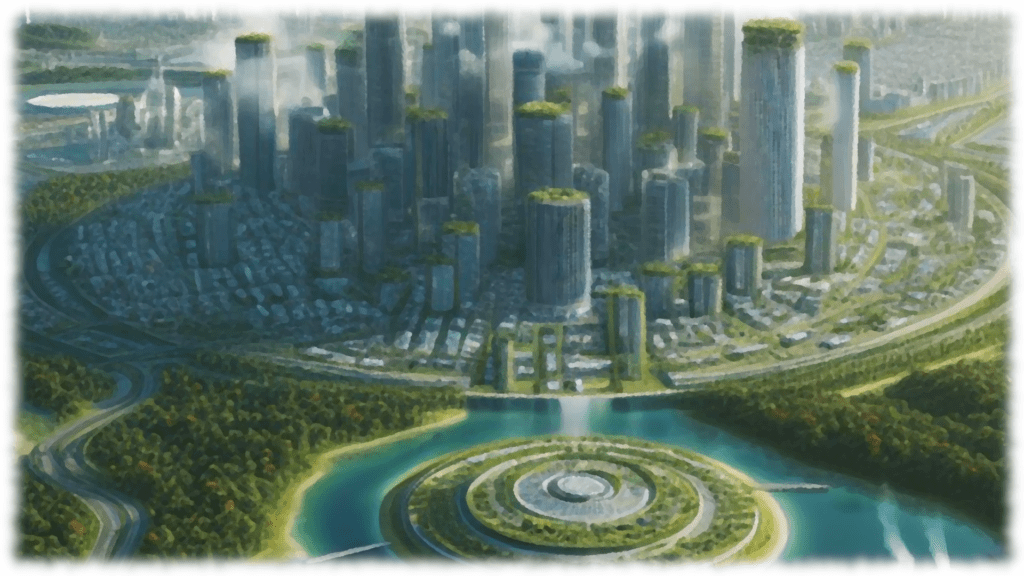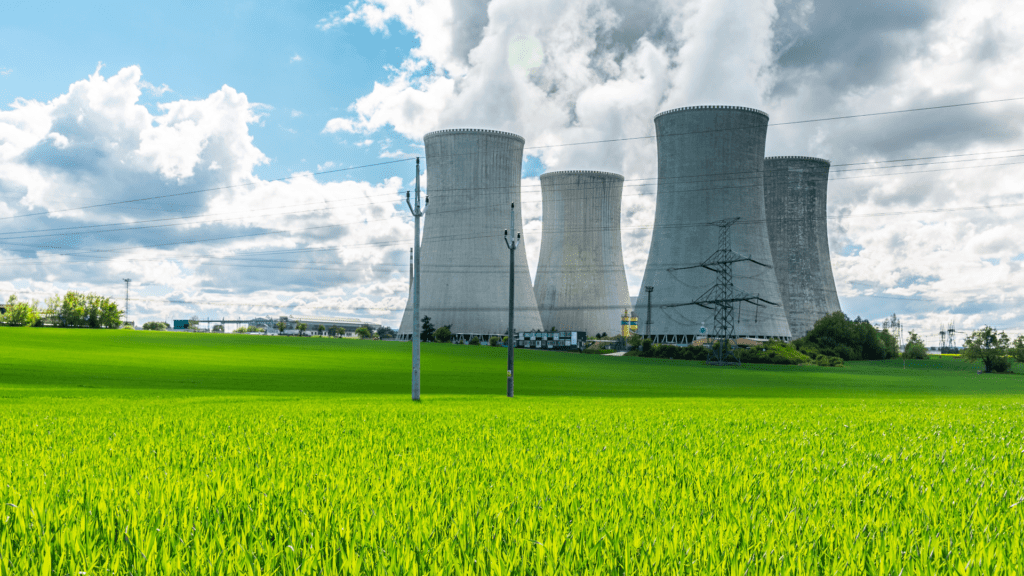Developing a New Inland Mega City at Wandoan.
There is a genuine need to build new Mega Cities inland. In recent years, urban developers have been forced to deal with the rapid growth of coastal cities as a result of inappropriate migration levels.
These numerous and substantial challenges are now proving to be too difficult in some cases and the future of some existing cities is concerning. The existing city locations along the east coast of Australia no long have the capacity to handle the needs of the future, let alone the present.
Overpopulation, lack of space for new housing developments, congested streets, and strained government services and infrastructure have become not just pressing issues but major causes of concern.
As a result, there is growing interest in developing major cities inland as a solution to these issues. In some cases, these may need to be developed as Mega Cities.
What does an Inland Mega City Look Like?
A mega city is a term used to describe a highly populated urban area with a population of over 10 million people. These cities are characterized by their immense size, rapid growth, and economic significance.
As the world continues to urbanize, the need for mega cities is becoming more common, and their impact on society, economy, and the environment is undeniable.
An inland Mega City is more than just a large city; these are built on a massive scale.
A Mega city is intended to be a bustling hub of activity, where people from diverse backgrounds come together to live, work, and play at a location that was designed to handle to population it supports.
A New Inland Mega City can be a Hub of Prosperity.

An inland Mega City would be an economic powerhouse of any state or territory that it was located within. Mega Cities are designed to be the main hubs for business, investment, education and employment opportunities.
One defining characteristic of any proposed inland mega city is the intended population size. They are intended to house between 8 and 10 million residents (possibly more). When building a new inland Mega City, the bigger in size they can be, the better solution they will be.
Inland Mega City will be the home to the biggest Airports, Train Stations and Bus Depots. Road, Air and Rail transportation in and out of a Mega City is of paramount importance and these cities will be connected to major coastal areas via impressively large motorways to ensure ease of access.
These cities will accommodate a significant portion a countries population. The sheer number of people that will end up living in an inland mega city brings about unique challenges and opportunities but these are all catered for in the development process.
These cities are designed to have sprawling urban landscapes that stretch for miles. Skyscrapers, huge infrastructures dominate the cityscape, creating a visually impressive and dynamic environment.
Inland Mega Cities allow Coastal Cities to be capped.
By building inland mega cities, we create an opportunity for significant industrial and population relocation from overcrowded coastal cities.
This helps to alleviate the strain on resources and infrastructure in these coastal areas, especially the cities.
This allows for a more balanced distribution of population and economic activities. Industries that were once concentrated in coastal cities can now be spread out, creating new job opportunities and stimulating economic growth in the inland regions.
With the relocation of industries and population, coastal cities can then be capped in terms of further industrial and residential development.
This is crucial in order to prevent further overcrowding and strain on resources. By implementing these caps, we can ensure that the existing infrastructure and resources are utilized more efficiently, leading to a better quality of life for the residents.
Beautification and Development of Coastal Cities.
Once the caps on industrial and residential development are in place, the focus can then shift towards the beautification and development of the coastal cities.
This presents a unique opportunity to transform these areas into vibrant and attractive destinations, not only for residents but also for tourists.
The freed-up space can be utilized for the creation of parks, recreational areas, and cultural landmarks, enhancing the overall aesthetic appeal of the cities.
Beautification projects can include the creation of waterfront promenades, green spaces, and public art installations.
These initiatives not only improve the visual appeal of the cities but also contribute to the overall well-being and happiness of the residents.
By investing in the beautification of coastal cities, we can create a more liveable and sustainable environment for both current and future generations.
The Specifications of an Inland Mega City.

While population and size are important factors in defining an inland Mega City, there are other specifications that contribute to its distinctiveness:
1. The Economic Significance of a Mega City: A new Inland Mega city will become a major economic centre, driving state/territory and federal economies.
a. They will attract business, including multinational corporations, and international trade.
b. An inland Mega City will offer a wide range of job opportunities making them magnets for CEO’s and tradies, engineers, scientists and workers form all walks of life.
2. The Planned Cultural Diversity of a Mega City: With a population of around 10 Million people comes great diversity.
a. Mega cities become the home for people of all different cultures, languages, and traditions.
b. People from all over the world come together in live in a new Mega City. This creates a very rich tapestry of multiculturalism.
c. This diversity brings about a vibrant arts and entertainment scene, with museums, theatres, and festivals showcasing various cultural expressions.
3. Infrastructure and Transportation: Newly constructed Inland Mega cities require extensive infrastructure and transportation networks to support their massive populations.
a. Skyscrapers, highways, airports, and public transportation systems are essential components of these cities.
b. Efficient transportation systems are crucial for moving people and goods within the city and connecting it to other regions.
4. Environmental Impact is a major consideration: Any newly developed inland Mega cities have the potential to create significant negative environmental impact; so many precautions must be made.
a. The high concentration of people and industries leads to increased energy consumption, pollution, and waste generation.
b. However, as these new Mega Cities are being built from scratch, they can be designed to be at the forefront of sustainability initiatives and implementing clean technologies.
c. New Inland Mega Cities can be powered by a mix of efficient traditional power generation methods and renewable energy.
d. They can also be built using eco-friendly infrastructures that require less energy for cooling and heating.
Building Inland Mega Cities with Power Generation in Mind.

Inland mega cities are a fascinating concept that brings together the potential for urban development and the abundance of natural resources lying beneath the ground.
When constructed in areas rich in coal and natural gas reserves, these cities unveil exciting opportunities for building new technology high-efficiency low-emissions (HELE) coal-fired power stations and large-scale gas-fired power stations.
Moreover, with ample space for future developments, new technology nuclear power stations that do not require water cooling can also be built.
Unveiling the Potential: HELE Coal-Fired Power Stations.
One of the major advantages of constructing inland mega cities in areas with substantial coal reserves is the ability to harness this resource for electricity generation.
HELE coal-fired power stations offer a revolutionary approach to coal combustion, ensuring high efficiency and low emissions.
By using advanced technologies such as supercritical and ultra-supercritical boilers, these power stations can achieve significantly higher efficiencies compared to traditional coal-fired plants.
This means that more energy can be generated from the same amount of coal, reducing both fuel consumption and greenhouse gas emissions.
Embracing Natural Gas: Large-Scale Gas-Fired Power Stations.
In addition to coal, areas with substantial natural gas reserves can also benefit from the construction of large-scale gas-fired power stations.
Natural gas is a cleaner-burning fossil fuel compared to coal, emitting lower levels of carbon dioxide and other pollutants.
By utilizing this resource, inland mega cities can further enhance their energy production capabilities while minimizing their environmental impact.
Combined cycle gas turbine (CCGT) technology, which combines the use of gas turbines and steam turbines, can maximize the efficiency of gas-fired power stations, making them an excellent choice for meeting the increasing energy demands of these cities.
A Glimpse into the Future: New Technology Nuclear Power Stations.
Looking beyond fossil fuels, the construction of new technology nuclear power stations in inland mega cities presents an exciting prospect.
Unlike traditional nuclear power plants that rely on water cooling, these innovative designs utilize alternative cooling methods such as molten salt and air and helium.
This eliminates the need for large bodies of water, making it feasible to build nuclear power stations even in landlocked areas.
By tapping into the immense power of nuclear energy, these cities can diversify their energy sources and ensure a reliable and sustainable electricity supply for their growing populations.
Self-Sufficiency in Electricity Generation for Inland Mega Cities.
The combination of HELE coal-fired power stations, large-scale gas-fired power stations, and new technology nuclear power stations empowers inland mega cities to become self-sufficient in terms of electricity generation.
This self-sufficiency brings numerous benefits, including enhanced energy security, reduced dependence on external sources, and greater control over electricity prices.
By harnessing the abundant resources beneath their feet, these cities can create a robust and resilient energy infrastructure that supports their continued growth and development.
Major Reasons For Building New Inland Mega Cities.

One of the primary reasons for inland Mega Cities is to alleviate the strain on coastal areas and the environmental damage that excessive populations living in these areas is doing to the world.
Coastal cities have long been attractive to people due to their proximity to the ocean, natural beauty, and economic opportunities.
However, this popularity has led to overcrowding and limited space for expansion. By shifting the focus towards building inland Mega Cities, there is an opportunity to redirect population growth inland and reduce the burden on coastal areas.
Furthermore, the lack of space for new housing developments in coastal cities has resulted in skyrocketing property prices and a housing crisis.
Many people are unable to rent or buy homes in these areas, leading to an increase in homelessness, tent cities being built, people living in their cars and a widening wealth gap.
By building new Inland Mega Cities, they can be built with accommodation affordability in mind. This is our chance to create more affordable housing options and provide opportunities for people from diverse socio-economic backgrounds to live in thriving urban centres.
Congested streets and traffic congestion are also prevalent issues in coastal cities. The influx of people due to ridiculously high immigration levels, coupled with limited road infrastructure, has resulted in gridlock and increased commute times.
This not only affects the quality of life for residents but also hampers economic productivity.
Building new inland Mega Cities allows for the implementation of well-planned road networks and transportation systems, reducing traffic congestion in existing coastal cities and improving overall mobility for residents.
Moreover, the strain on government services and infrastructure in existing coastal cities has reached a critical point.
Public facilities such as schools, hospitals, and utilities are struggling to meet the demands of an unsustainable population growth levels.
By developing Mega Cities inland, governments can invest in new infrastructure and ensure that public services are adequately provided for residents. This includes building state-of-the-art healthcare facilities, educational institutions, and efficient utility networks.
New Inland Mega City Developments are the only way forward.
The need for building new Inland Mega Cities has become increasingly evident in recent years. Overpopulation, lack of space for new housing developments, congested streets, and strained government services and infrastructure are pressing issues in coastal cities.
By shifting the focus towards inland development, we can alleviate these challenges and create more sustainable and liveable urban environments for future generations.
With its picturesque landscapes and abundant natural resources, the Western Downs region of Queensland, Australia has the potential to become a thriving hub of economic activity and innovation.
The region is blessed with fertile agricultural land, making it an ideal location for farming and food production.
An inland Mega City at Wandoan is a matter of when, not if.

The vast open spaces also provide ample opportunities for building world class international airports, new Coal and Gas Fired Power Stations and mix this with new renewable energy projects, such as solar and wind farms, which can contribute to the region’s sustainability goals.
In the case of the Wandoan and the potential of building a new inland Mega City in this area, if the Surat Hydrogen Project goes ahead and proves to be successful then there is scope for Hydrogen fuelled power generation options as well.
As urban planners and developers explore the potential of the Western Downs region and construction of one of the worlds largest inland Mega Cities, their minds will also on preserving the areas natural beauty and cultural heritage.
They will want to protect and conserve the region’s unique ecosystems, including its iconic national parks and wildlife reserves as these areas will need to be untouched when any new inland Mega City is built.
A commitment to sustainability and environmental stewardship will ensure that future Mega City development in the area is carried out in a responsible and sustainable manner.
Wandoan boasts a favourable climate that is conducive to both agricultural and industrial activities. With an average annual temperature of 25°C and an average rainfall of 600mm, the region provides ideal conditions for farming and crop cultivation to support a new Inland Mega City.
The fertile soil and ample water supply make it an attractive destination for agricultural businesses looking to expand their operations and support the 10 Million people that may end up living in this area.
The development of a Mega City in the Wandoan area will certainly alleviate the strain on existing urban centres along the eastern coastline of Australia.
By creating a new hub for economic activities, the region can absorb a large chunk of the population and reduce congestion in existing coastal cities.
Overall, Wandoan’s strategic location, favourable climate, abundant natural resources, and range of amenities make it a prime candidate for the development of an inland Mega City and hopefully this idea becomes a reality sometime soon.
Careful and Thoughtful Planning for the Wandoan Area Mega City.
With careful planning and investment, Wandoan has the potential to become a thriving urban centre that drives industry, economic growth, new technology innovations, and fix a lot of problems currently being experienced in Australia. Areas of planning requiring careful thought are as follows:
1) Infrastructure Development: Building a mega city in Wandoan would necessitate the development of robust infrastructure to support the growing population and economic activities.
a. This would include the construction of new roads, highways, and public transportation systems, as well as the expansion of utilities such as water and electricity supply.
b. The investment in infrastructure would not only benefit the city itself but also improve connectivity and accessibility for surrounding towns and communities.
2) Community Engagement and Participation: The establishment of a mega city in Wandoan would provide an opportunity for community engagement and participation in the city’s development.
a. Local residents, businesses, and organizations could have a say in shaping the new inland Mega City’s infrastructure, amenities, and services, ensuring that their needs and aspirations are considered.
b. This collaborative approach would foster a sense of ownership and pride among the community members, leading to a stronger and more cohesive society.
3) Educational and Research Opportunities: A mega city in Wandoan would attract educational institutions and research centres, providing residents with access to a wide range of educational and research opportunities.
a. The presence of universities, colleges, and vocational training centres would enable individuals to acquire the necessary skills and knowledge for employment in various industries.
b. Moreover, research institutions focusing on areas such as agriculture, clean, efficient and renewable energy, as well as environmental conservation could contribute to innovation and sustainable development in the region.
4) Cultural Diversity and Vibrancy: The establishment of a mega city in Wandoan would attract a diverse population from different backgrounds and cultures.
a. This influx of people would enrich the city’s cultural fabric, fostering a vibrant and inclusive community.
b. The presence of diverse cultural institutions, such as museums, art galleries, and performance venues, would provide opportunities for cultural exchange and celebration, further enhancing the city’s appeal as a cultural destination.
5) Environmental Sustainability: Building a mega city in Wandoan would provide an opportunity to incorporate sustainable practices and technologies into the city’s design and operation.
a. From the use of the worlds latest and best energy generation sources the implementation of advance waste management systems such as CAT-HTR Chemical Recycling of plastics and Sierra Energy’s FastOx Waste Gasification technology.
b. This new city could serve as a model for environmentally conscious urban development. By prioritising sustainability, the city could reduce its carbon footprint, conserve natural resources, and mitigate the impacts of climate change.
c. Overall, the advantages of building a mega city in Wandoan are numerous and far-reaching.
d. From economic growth and job creation to environmental sustainability and cultural vibrancy, the development of a mega city in Wandoan would bring immense benefits to the region and its residents.
e. With careful planning and collaboration, Wandoan has the potential to become a thriving and sustainable urban centre in the heart of the Western Downs region.
6) Economic Sustainability: Another important consideration is the long-term economic sustainability of the city.
a. While the initial investment in infrastructure and development may create jobs and boost the local economy, it is essential to establish a diverse range of industries and employment opportunities to sustain the city’s growth in the future.
b. This may involve attracting businesses from various sectors, promoting entrepreneurship, and investing in education and skills training programs to ensure a skilled workforce.
7) Social Infrastructure: In addition to physical infrastructure, the development of social infrastructure is crucial for the well-being of the city’s residents.
a. This includes the provision of healthcare facilities, educational institutions, recreational spaces, and community centres.
b. Adequate planning and investment in these areas will contribute to a high quality of life for the city’s residents and attract new residents to the area.
8) Governance and Administration: Establishing an effective governance and administrative structure is vital for the smooth functioning of the city.
a. This includes the establishment of local government bodies, regulatory frameworks, and policies that promote transparency, accountability, and efficient service delivery.
b. Additionally, mechanisms for citizen participation and engagement should be put in place to ensure that the needs and concerns of the residents are addressed.
9) Social Cohesion and Inclusivity: Building a new Inland Mega City at Wandoan will require careful attention to social cohesion and inclusivity.
a. Efforts will need to be made to foster a sense of belonging and promote diversity and inclusivity in all aspects of the city’s development.
b. This includes creating affordable housing options, providing access to essential services for all residents, and promoting social integration through community programs and initiatives.
10) Risk Management: Lastly, comprehensive risk management strategies need to be developed to address potential challenges and uncertainties.
a. This includes assessing and mitigating risks related to natural disasters such as floods, droughts or earthquakes etc.
b. Thought must also go into how this new inland Mega City will sustain throughout economic fluctuations, and social conflicts.
c. Adequate contingency plans should be in place to ensure the city’s resilience and ability to adapt to changing circumstances.
d. By addressing these challenges and considerations, the development of a major city in Wandoan can be a transformative and sustainable endeavour.
e. It has the potential to create economic opportunities, improve quality of life, and contribute to the overall development of the region.








